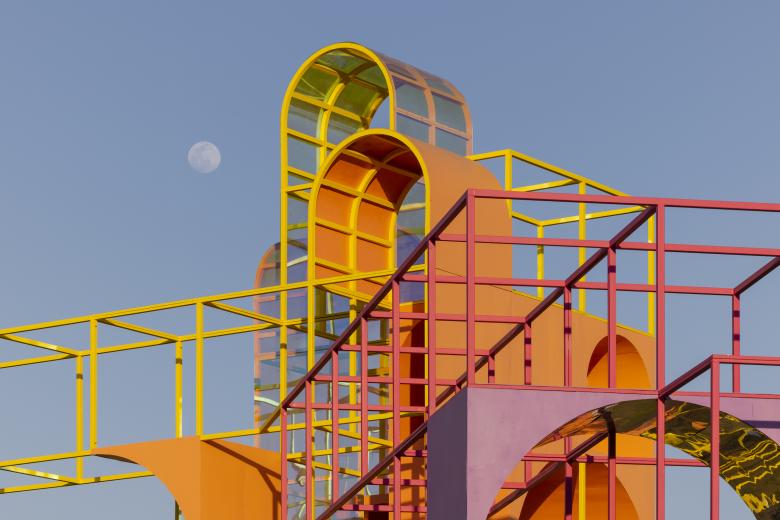Photo: Lance Gerber, courtesy of Coachella Music & Arts Festival
After two years of cancellations due to the coronavirus pandemic, the Coachella Music & Arts Festival has returned for two weekends in April. The 2022 festival includes eleven immersive installations by architects, artist and designers, including The Playground, a colorful standout designed by Architensions.
This year's Coachella Valley Music and Arts Festival is taking place at the Empire Polo Club in Indio, California, from April 15–17 and April 22–24. An astonishing 125,000 ticketed festival-goers will attend on each of those six sold-out days, listening to dozens of live acts but also experiencing the nearly dozen installations sprinkled across the venue grounds.
There must be something about Southern California's Coachella Valley that inspires artists and designers to tap into every color of the rainbow: in 2019, the last time the festival was held, the standout contribution was Francis Kéré's Sarbalé Ke, a dozen towers in triangles of color. Architension's The Playground continues that "tradition," as explored below in a few photographs.
The Playground is designed by Architensions, the design and research office led by Alessandro Orsini and Nick Roseboro and headquartered "between Brooklyn and Rome." (Photo: Lance Gerber, courtesy of Coachella Music & Arts Festival)
Fun fact: Nick Roseboro played trumpet with LCD Soundsystem at Coachella in 2016. (Photo: Michael Vahrenwald)
The Playground has a gridded steel frame filled with wood panels, dichroic film, mirror film, and plastic sheets. (Photo: Lance Gerber, courtesy of Coachella Music & Arts Festival)
The four towers range in height from 42 feet to 56 feet; by comparison,
Francis Kéré's 2019 installation reached more than 60 feet. (Photo: Lance Gerber, courtesy of Coachella Music & Arts Festival)
The colors — magenta and yellow for the frame and cyan for the "piazza" — were derived from the spectrum of the dichroic film use; it is visible here at the vaulted top of the tower. (Photo: Lance Gerber, courtesy of Coachella Music & Arts Festival)
The colors for the infill cladding were "chosen from the associated adjacencies of the three colors," according to the designers. (Photo: Lance Gerber, courtesy of Coachella Music & Arts Festival)
In a statement on the installation, Orsini and Roseboro cite Constant Nieuwenhuys’s New Babylon, Cedric Price's Fun Palace, and Aldo Rossi's Teatro del Mondo as inspirations. (Photo: Michael Vahrenwald)
Although inebriated festival-goers might disagree, The Playground, regardless of its name, is static and not meant to be climbed, meaning interactions with it are primarily visual; most dramatic are the sun hitting the dichroic film and the fun-house-like mirrored film at the base. (Photo: Michael Vahrenwald)
The designers sum up The Playground as "a fragment of a city, a node for engaging festival-goers in collective interactions and in performance, relaxation, and play." (Photo: Michael Vahrenwald)









